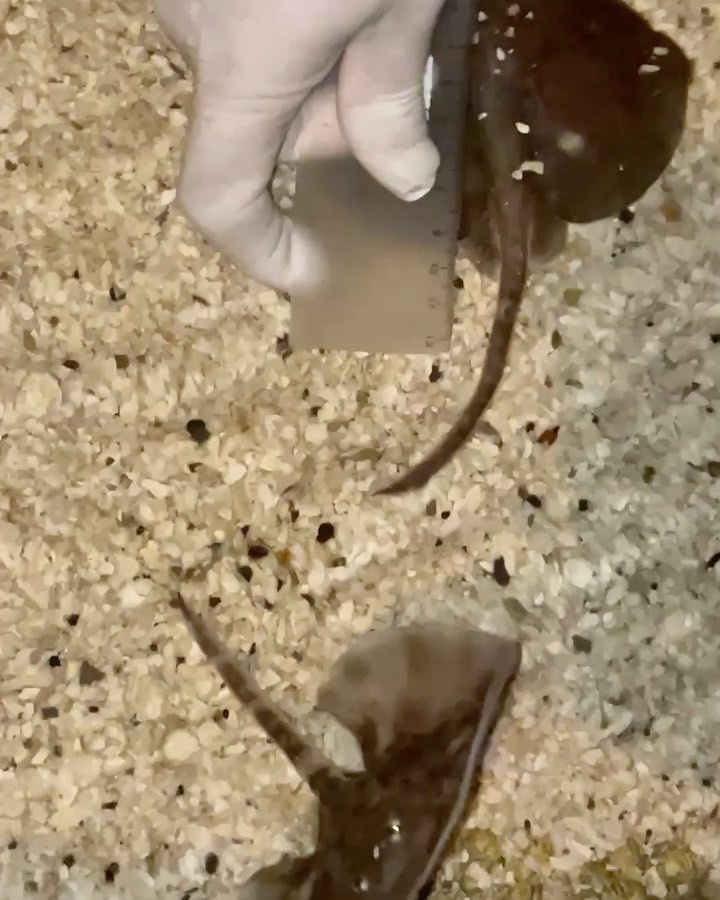Summary:
1. The birth of a baby ray is a unique and fascinating process that takes around 4 to 5 months of incubation.
2. Female rays can lay up to 150 eggs a year, with each clutch consisting of 2 eggs.
3. Bioparks like the one at the aquarium play a crucial role in studying and conserving wildlife, including rays.
Nature never ceases to amaze us with its incredible diversity and unique life forms. One such marvel is the birth of a baby ray. In this article, we will delve into the fascinating world of ray reproduction and explore the wonders of these incredible creatures. Let’s dive in!
The Birth of a Baby Ray:
Did you know that baby rays undergo a period of incubation before they are ready to burst into the world? On average, the incubation period lasts about 4 to 5 months, during which the ray embryo develops and grows within the safety of its egg. When the time is right, the baby ray emerges, measuring around 14 centimeters in length and weighing a mere 15 grams. It’s truly remarkable to witness the birth of these miniature marvels!
The Egg-laying Process:
Female rays play a vital role in the continuation of their species by laying eggs. However, the unique strategy employed by female rays makes this process even more fascinating. Unlike other animals that lay multiple eggs in one go, female rays lay their eggs in pairs. In other words, each clutch consists of two eggs. But here’s the astonishing part – after three to five days, the female ray is ready to lay another clutch of eggs. This means that, over a year, a single female ray can lay up to a staggering 150 eggs! It’s nature’s way of ensuring the survival and propagation of these magnificent creatures.
Contributing to Wildlife Conservation:
The birth and reproduction process of rays is mesmerizing and provides a valuable opportunity for scientific study and conservation efforts. Places like the Bioparque, with its nursery located within the aquarium, actively contribute to our understanding of these incredible animals. By closely observing the gestation period, the scientists and zookeepers at Bioparque can generate knowledge that helps conserve and strengthen wild populations of rays and establish protected natural areas. Their research and efforts pave the way for a greater understanding of these fascinating creatures and contribute to their long-term survival.
Visiting the Nursery:
If you are as captivated by the world of rays as we are, visiting the Bioparque Aquarium nursery is a must. Here, you can get an up-close and personal look at the gestation process of rays and witness the birth of these magnificent creatures. The nursery provides a safe and controlled environment for the newborn rays, allowing them to thrive and grow under the watchful care of expert zookeepers. It’s an educational and awe-inspiring experience that connects us with the wonders of nature.
The birth of a baby ray is a unique and awe-inspiring event. From their months-long incubation period to the astonishing egg-laying process, rays continue to captivate us with their remarkable traits. Thanks to the efforts of places like Bioparque, we can witness these extraordinary events and contribute to their conservation and understanding. So, why wait? Embark on a journey of discovery and visit the nursery at Bioparque to witness the magic of a baby ray’s birth. It’s an opportunity you won’t want to miss!
*****
Source Description
¿Viste alguna vez una cría de raya? ¡Es tu oportunidad! ☝🏼
🍼 Estas pequeñas nacen luego de entre 4 y 5 meses de incubación y su largo total al nacer es de aproximadamente 14 cm pesando unos 15 g.
🥚 Las hembras pueden poner de a 2 huevos a la vez y luego de 3 a 5 días, volver a poner otros 2. Así, en un año, ¡pueden poner hasta 150 huevos!
🔬 Estos acontecimientos permiten al Bioparque generar conocimiento sobre los animales para contribuir a conservar y fortalecer las poblaciones de animales silvestres y establecer áreas naturales protegidas.
¡Conocé más sobre el proceso de gestación de las rayas visitando la nursery en el acuario del Bioparque! 🌊


